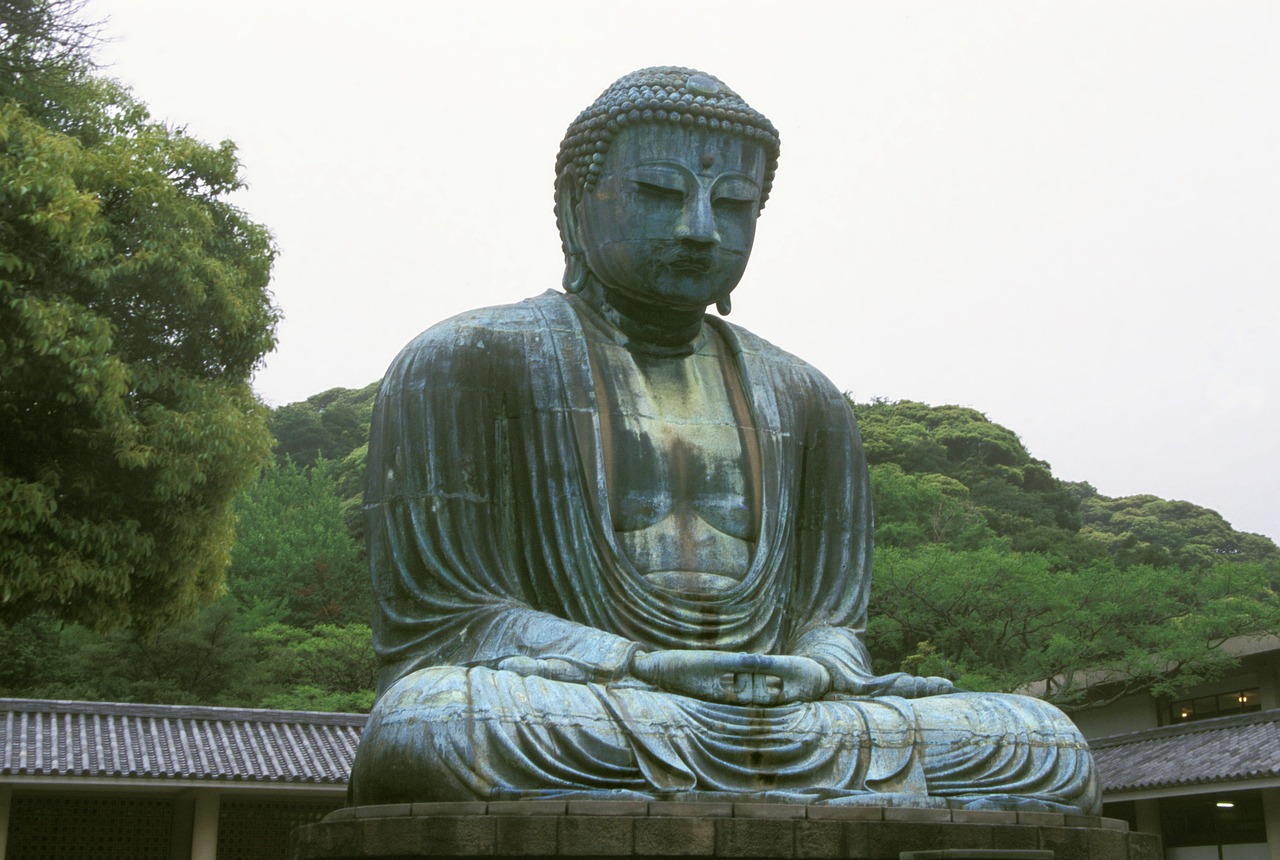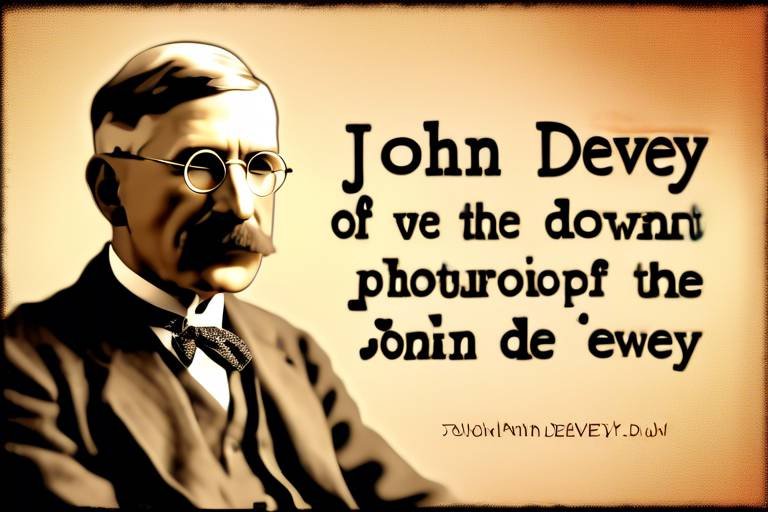Understanding Gilles Deleuze's Nomadic Thought and Philosophy
Gilles Deleuze, a French philosopher, has profoundly influenced contemporary thought with his innovative ideas, particularly through the lens of nomadism. But what does it mean to embrace a nomadic philosophy? Essentially, Deleuze invites us to reconsider our understanding of identity, existence, and knowledge. Instead of viewing these concepts as fixed and rigid, he encourages us to see them as fluid and dynamic, much like a river that adapts and changes course rather than a stagnant pond. This perspective not only challenges traditional philosophical frameworks but also resonates across various disciplines, from art and literature to education and ethics.
At the heart of Deleuze's philosophy is the idea that we are not bound by predetermined paths or structures. Instead, we can navigate through a landscape of possibilities, much like a nomad traversing vast terrains. This approach invites us to embrace change and uncertainty, recognizing that growth often occurs in the spaces between established norms. In today’s fast-paced world, where adaptability is key, Deleuze’s nomadic thought offers a refreshing lens through which to view our personal and collective experiences.
As we delve deeper into Deleuze's work, we will explore the implications of nomadic thought across various contexts, including education, art, and ethics. Each of these areas reveals how embracing fluidity and connectivity can lead to new forms of understanding and expression. For instance, in education, a nomadic approach can foster creativity and collaboration among students, breaking down the barriers of traditional learning environments. Similarly, in the arts, Deleuze's ideas inspire artists and writers to experiment with innovative narratives and forms, challenging the status quo and encouraging a more inclusive representation of diverse experiences.
Moreover, Deleuze's philosophy serves as a powerful critique of modernity, urging us to reconsider the Enlightenment's rigid structures of thought. By highlighting the limitations of these frameworks, he opens up space for alternative ways of knowing and being. As we navigate through the complexities of contemporary life, Deleuze's nomadic thought encourages us to embrace multiplicity and uncertainty, ultimately enriching our understanding of the world around us.
In summary, Gilles Deleuze's nomadic thought is not just a philosophical concept; it’s a way of engaging with the world that emphasizes fluidity, connectivity, and creativity. As we continue to explore his ideas, we will uncover the profound impact they have on various disciplines, shaping our understanding of identity, knowledge, and ethics in the modern age.
- What is nomadic thought? Nomadic thought refers to a philosophical approach that emphasizes fluidity and adaptability in understanding identity and existence, challenging fixed structures.
- How does Deleuze's philosophy influence education? Deleuze's ideas encourage collaborative and creative learning environments, moving away from traditional, rigid educational frameworks.
- What are rhizomatic structures? Rhizomatic structures are non-hierarchical, interconnected models of knowledge that promote multiplicity and diversity in understanding relationships.
- How does Deleuze critique modernity? He critiques modernity by highlighting the limitations of Enlightenment thinking, advocating for a reevaluation of assumptions about progress and knowledge.
- What is the legacy of Deleuze's thought? Deleuze's legacy continues to influence various fields, including philosophy, sociology, art, and literature, promoting a more dynamic understanding of human experience.

The Concept of Nomadism
In the realm of philosophy, Gilles Deleuze's concept of nomadism stands out as a revolutionary lens through which we can understand identity and existence. Rather than viewing identity as a fixed point, Deleuze suggests that it is more akin to a flowing river, constantly shifting and adapting to its environment. This idea of fluidity over rigidity invites us to reconsider how we perceive ourselves and our relationships with others.
Nomadism, as Deleuze articulates, is not merely about physical movement; it's a metaphor for a way of thinking that embraces change and rejects the constraints of traditional structures. Just as a nomad traverses various landscapes, individuals can navigate through different identities and experiences. This approach has profound implications across various fields, including sociology, psychology, and cultural studies. For instance, in a world increasingly defined by globalization, the nomadic perspective allows for a more inclusive understanding of cultural identities that are often hybrid and multifaceted.
Moreover, nomadism challenges the notion of a singular narrative. Instead of adhering to a linear progression of life, individuals are encouraged to embrace a multiplicity of experiences. This can be seen in the rise of multi-faceted identities in contemporary society, where people often embody various roles and affiliations simultaneously. The implications of this are vast, as they encourage a more open and dynamic approach to personal and collective identity.
In practical terms, nomadic thought can lead to a more adaptable mindset in both personal and professional realms. For example, in the workplace, a nomadic approach can foster innovation and creativity, allowing teams to collaborate across disciplines and adapt to new challenges. In education, it encourages a learning environment where students are not just passive recipients of knowledge but active participants in their own learning journey. This adaptability is crucial in a world that is constantly evolving.
In conclusion, Deleuze's concept of nomadism serves as a powerful reminder of the importance of flexibility and adaptability in our lives. By embracing the nomadic spirit, we can navigate the complexities of modern existence with greater ease and understanding. As we move forward, it becomes increasingly vital to recognize the value of this perspective, not just for ourselves, but for society as a whole.

Rhizomatic Structures
When we dive into Gilles Deleuze's concept of rhizomatic structures, we're stepping into a world that defies traditional boundaries. Imagine a garden where plants grow in all directions, intertwining and connecting without a clear beginning or end. This is the essence of the rhizome—a model that celebrates non-hierarchical relationships and the power of connectivity over rigid, tree-like structures that dominate conventional thinking.
In a rhizomatic framework, knowledge is not a straight line but a sprawling network of connections. Deleuze invites us to rethink how we produce and share information. Instead of a singular path leading to a predetermined destination, rhizomatic structures embrace multiple entry points and routes. This dynamic approach can be seen in various fields, from education to social movements, where collaboration and fluidity are key.
One of the most compelling aspects of rhizomatic thinking is its ability to foster creativity. In a world increasingly defined by complexity and rapid change, the rhizome encourages us to adapt and innovate. For instance, consider how social media platforms operate. They allow for an organic flow of ideas, where anyone can contribute, remix, and share content. This participatory culture is a prime example of a rhizomatic structure in action, breaking down barriers and enabling diverse voices to emerge.
Moreover, rhizomatic structures challenge the conventional notion of authority. In traditional hierarchies, knowledge is often seen as something to be possessed by a select few. In contrast, rhizomatic thinking democratizes knowledge, making it accessible to all. This shift has profound implications for how we understand expertise and authority in our society. It encourages a collaborative approach where everyone can contribute, leading to richer, more diverse perspectives.
To better illustrate the contrast between rhizomatic and traditional structures, consider the following table:
| Aspect | Rhizomatic Structure | Traditional Structure |
|---|---|---|
| Growth | Non-linear, multi-directional | Linear, hierarchical |
| Connection | Open and collaborative | Closed and exclusive |
| Knowledge Production | Collective and participatory | Individual and authoritative |
| Flexibility | Adaptable and fluid | Rigid and fixed |
As we can see, the rhizomatic model offers a refreshing alternative to the traditional ways of thinking. It encourages us to embrace complexity and uncertainty, recognizing that knowledge is always evolving. This perspective is particularly relevant in today's world, where rapid technological advancements and shifting cultural landscapes challenge our established norms.
In education, for instance, rhizomatic structures can transform how we teach and learn. Instead of a one-size-fits-all approach, educators can create environments that promote exploration and collaboration. Students become active participants in their learning journeys, navigating through a web of resources and ideas. This not only enhances their understanding but also cultivates essential skills for the future, such as critical thinking and adaptability.
In conclusion, Deleuze's rhizomatic structures invite us to rethink our understanding of relationships, knowledge, and creativity. By embracing this model, we can foster a more inclusive and dynamic society that values connection and collaboration. The implications of rhizomatic thinking extend far beyond philosophy; they resonate in our everyday lives, shaping how we interact, learn, and create.

Contrasting Trees and Rhizomes
When we think about the structure of knowledge and relationships, we often picture a tree. This traditional model, with its clear hierarchy and branching paths, suggests a linear progression of ideas and a fixed order of importance. However, Gilles Deleuze, in his exploration of nomadic thought, proposes an alternative: the rhizome. Unlike trees, rhizomes are underground stems that spread out in all directions, creating a network that is decentralized and non-hierarchical.
Imagine a tree with its trunk standing tall, representing a single point of authority or knowledge. The branches extend outward, each one dependent on the trunk for support. Now, contrast that with a rhizome, which can sprout new shoots from anywhere along its length, allowing it to adapt and grow in unpredictable ways. This metaphor highlights the fundamental differences between these two structures:
| Feature | Tree Structure | Rhizomatic Structure |
|---|---|---|
| Hierarchy | Linear and hierarchical | Decentralized and non-hierarchical |
| Growth | Fixed growth pattern | Dynamic and adaptable |
| Connections | Limited connections | Multiple, diverse connections |
| Knowledge Production | Top-down knowledge dissemination | Collaborative and collective knowledge creation |
This rhizomatic approach encourages a more fluid understanding of knowledge, where ideas can connect in unexpected ways, leading to innovation and creativity. For instance, in contemporary education, embracing rhizomatic principles can foster environments where students engage collaboratively, sharing insights and building knowledge together rather than relying solely on a teacher's authority.
Moreover, rhizomatic thinking is particularly relevant in our interconnected world, where information flows rapidly across various platforms. Just as a rhizome can grow in multiple directions, our understanding of complex issues can benefit from diverse perspectives, encouraging a richer dialogue and a more comprehensive grasp of reality. In this way, Deleuze’s contrast between trees and rhizomes not only challenges traditional notions of knowledge but also empowers us to rethink how we engage with the world around us.

Applications in Education
Gilles Deleuze's philosophy, particularly his notion of nomadism and rhizomatic structures, has profound implications for education. In a world where knowledge is no longer confined to rigid frameworks, Deleuze's ideas encourage us to rethink how we approach teaching and learning. Imagine a classroom where students are not merely passive recipients of information but active participants in a dynamic process of knowledge creation. This is the essence of a nomadic approach to education, where fluidity and adaptability take precedence over fixed curricula.
Incorporating Deleuze's concepts into educational practices means fostering an environment where creativity and collaboration thrive. For instance, instead of following a linear path through subjects, students can explore topics in a more interconnected way, much like a rhizome that spreads in multiple directions. This approach not only enhances engagement but also mirrors the complexity of real-world issues, preparing students for the challenges they will face outside the classroom.
One way to implement these ideas is through project-based learning, where students work on interdisciplinary projects that allow them to draw connections between different fields. This method encourages students to think critically and creatively, as they must navigate through various sources of information, much like a nomad traversing diverse landscapes. Additionally, technology can play a significant role in this transformation. Online platforms can facilitate collaboration among students from different backgrounds, enabling them to share perspectives and ideas, thus enriching their learning experience.
Moreover, educators can adopt a more flexible approach to assessment. Instead of traditional exams, which often measure rote memorization, they can implement portfolio assessments or peer evaluations that reflect a student's journey and growth. This shift aligns with Deleuze's emphasis on process over product, recognizing that learning is a continuous, evolving experience.
In summary, integrating Deleuze's nomadic thought into education means embracing change and fostering an environment where students can explore, collaborate, and innovate. By doing so, we prepare them not just to absorb knowledge but to contribute to a constantly evolving world. The classroom becomes a vibrant ecosystem, much like a rhizome, where ideas can flourish and connections can be made, ultimately leading to a richer educational experience.
- What is Deleuze's concept of nomadism?
Nomadism in Deleuze's philosophy refers to a dynamic and fluid approach to identity and existence, emphasizing adaptability and movement rather than fixed structures. - How can rhizomatic structures be applied in education?
Rhizomatic structures can be applied in education through project-based learning, interdisciplinary studies, and flexible assessment methods that encourage creativity and collaboration. - What are the benefits of a nomadic approach to learning?
A nomadic approach fosters critical thinking, encourages exploration of interconnected ideas, and prepares students for real-world challenges by promoting adaptability.

Influence on Art and Literature
Gilles Deleuze's philosophy, particularly his notion of nomadism, has profoundly influenced various artistic and literary movements, igniting a creative revolution that challenges traditional forms and narratives. His ideas encourage artists and writers to break free from the constraints of fixed identities and linear storytelling. Instead, they embrace a more fluid and dynamic approach, allowing for multiple interpretations and perspectives.
One of the most significant impacts of Deleuze's thought is the way it reshapes the understanding of narrative structure. In literature, authors influenced by Deleuze often employ non-linear storytelling techniques, creating works that mirror the complexity of human experience. For instance, novels may intertwine various plotlines and characters, much like a web rather than a straightforward path. This approach not only captivates readers but also invites them to engage actively with the text, encouraging them to piece together meaning from fragmented narratives.
In the realm of visual arts, Deleuze's ideas have inspired artists to explore themes of multiplicity and interconnectivity. Many contemporary artists create works that reflect the rhizomatic structure, where different elements coexist and interact without a hierarchical order. This can be seen in installation art, where the viewer's experience is shaped by their movement through the space, creating a unique encounter that changes with each visit. Artists like Olafur Eliasson and Marina Abramović exemplify this influence, as their works often blur the boundaries between the observer and the observed, emphasizing the relational aspect of art.
To illustrate the breadth of Deleuze's influence, consider the following table that highlights key movements and figures in art and literature that embody his nomadic thought:
| Movement | Influential Figures | Key Characteristics |
|---|---|---|
| Postmodern Literature | David Foster Wallace, Thomas Pynchon | Non-linear narratives, metafiction, multiple viewpoints |
| Contemporary Art | Olafur Eliasson, Marina Abramović | Interactive installations, audience participation, fluid identities |
| Performance Art | Pina Bausch, Yoko Ono | Emphasis on process, collaboration, and the ephemeral nature of art |
Moreover, Deleuze's philosophy has sparked a new wave of critical thinking in art criticism and theory. Critics now often analyze artworks through the lens of rhizomatic thinking, examining how various elements within a piece interact and resonate with one another, rather than adhering to rigid categorizations. This shift not only enriches the discourse surrounding art and literature but also fosters a deeper appreciation for the complexity of creative expression.
In summary, the influence of Gilles Deleuze on art and literature is undeniable. His nomadic thought encourages a departure from traditional forms, inviting creators to explore new territories of expression. By embracing fluidity and multiplicity, artists and writers can challenge established norms, opening up a world of possibilities that resonate with the complexities of contemporary life.
- What is Gilles Deleuze's concept of nomadism?
Nomadism in Deleuze's philosophy refers to a dynamic and fluid approach to identity and existence, emphasizing movement and change over fixed structures. - How does Deleuze's philosophy influence contemporary art?
Deleuze's ideas encourage artists to embrace non-linear narratives and interactive forms, often resulting in works that invite active engagement from the audience. - What are rhizomatic structures?
Rhizomatic structures are non-hierarchical and interconnected, promoting a model of connectivity that contrasts with traditional tree-like structures in knowledge and organization. - How can Deleuze's philosophy be applied in education?
His concepts can transform educational practices by fostering creativity, collaboration, and a more student-centered approach to learning.

Nomadic Ethics
Gilles Deleuze's concept of presents a fascinating departure from traditional moral frameworks that often rely on fixed rules and universal principles. Instead, Deleuze invites us to embrace a fluid understanding of ethics, one that adapts to the complexities of our ever-changing world. Imagine navigating through life like a nomad, constantly shifting your perspective and adjusting your actions based on the landscapes of your experiences. This approach not only acknowledges the diversity of human experience but also emphasizes the importance of context in ethical decision-making.
At the core of nomadic ethics is the idea that ethical considerations should not be confined to rigid categories. Instead, they should be seen as dynamic and evolving, much like the nomadic tribes that traverse vast terrains. This perspective encourages us to think beyond binary oppositions, such as right and wrong, and to engage in a more nuanced understanding of morality. It challenges us to ask questions like: What does it mean to act ethically in a world that is constantly in flux? How can we cultivate a sense of responsibility that is adaptable to different situations?
In practical terms, nomadic ethics can be applied in various fields, including politics, social justice, and environmentalism. For instance, in the realm of social justice, a nomadic ethical approach might involve recognizing the unique struggles of different communities and advocating for solutions that are tailored to their specific needs. This contrasts sharply with a one-size-fits-all approach that often overlooks the complexities of individual situations.
Moreover, Deleuze's nomadic ethics encourages a sense of interconnectedness among individuals and communities. It reminds us that our actions have far-reaching consequences, and that ethical considerations should extend beyond our immediate surroundings. By fostering a sense of empathy and understanding, we can cultivate a more inclusive and compassionate society. As we navigate through the intricate web of human relationships, nomadic ethics serves as a guiding principle, urging us to remain open to new ideas and perspectives.
In summary, Deleuze's nomadic ethics offers a refreshing lens through which we can examine our moral responsibilities. It challenges us to embrace uncertainty and fluidity, recognizing that ethical dilemmas often require us to think critically and adaptively. As we continue to grapple with the complexities of modern life, adopting a nomadic ethical framework may be the key to fostering a more just and equitable world.
- What is nomadic ethics? Nomadic ethics is a concept introduced by Gilles Deleuze that emphasizes a fluid and adaptable approach to morality, moving away from fixed rules and universal principles.
- How does nomadic ethics differ from traditional ethics? Unlike traditional ethics, which often rely on rigid moral frameworks, nomadic ethics encourages a dynamic understanding of ethical considerations based on context and individual circumstances.
- In what areas can nomadic ethics be applied? Nomadic ethics can be applied in various fields, including social justice, politics, and environmentalism, by promoting tailored solutions that consider the unique needs of different communities.
- Why is interconnectedness important in nomadic ethics? Interconnectedness highlights that our actions have broader implications, encouraging empathy and understanding in our ethical decision-making.

Deleuze and Postmodernism
Gilles Deleuze's work is often viewed through the lens of postmodern thought, a philosophical movement that challenges the grand narratives and absolute truths established by modernity. Deleuze, in his unique style, embraces complexity and ambiguity, offering a refreshing perspective that resonates with the chaotic realities of contemporary life. But what does it mean to be postmodern in Deleuze's eyes? Essentially, he invites us to reconsider our understanding of identity, knowledge, and culture in a world that is constantly shifting.
One of the key elements of Deleuze's philosophy is his critique of modernity, particularly its reliance on linear progress and fixed meanings. He argues that the Enlightenment's quest for certainty has led to a narrow understanding of existence, one that overlooks the richness of diversity and the potential for multiple interpretations. This critique is not just a dismissal of modern ideas; rather, it serves as a call to embrace the fluidity of thought and experience. In Deleuze's view, life is not a straight path but a labyrinthine journey, filled with unexpected turns and possibilities.
Moreover, Deleuze's philosophy encourages us to rethink the way knowledge is produced and disseminated. Instead of adhering to traditional hierarchies that prioritize certain forms of knowledge over others, he advocates for a more democratic approach. This entails recognizing the value of different perspectives and experiences, allowing for a more inclusive understanding of truth. In this sense, Deleuze's ideas align closely with the principles of postmodernism, which seeks to dismantle the power structures that govern knowledge and meaning.
To illustrate this point, consider the following aspects of Deleuze's engagement with postmodernism:
- Multiplicity: Deleuze celebrates the idea that there is no singular truth or identity. Instead, he posits that we are all made up of a multitude of experiences and influences, which can change over time.
- Fluidity: In a postmodern world, nothing is fixed. Deleuze's philosophy reflects this by emphasizing the importance of adaptability and change in our understanding of self and society.
- Interconnectivity: Much like the rhizome, Deleuze's thought highlights the interconnectedness of ideas and cultures, suggesting that knowledge is a web rather than a tree.
In the realm of culture, Deleuze's influence is evident in various artistic movements that embrace fragmentation and non-linearity. Postmodern art and literature often reflect his ideas by resisting traditional forms and structures. Instead of linear narratives, we see works that challenge the reader's expectations, inviting them to engage with the text in a more active and interpretive manner. This aligns perfectly with Deleuze's belief in the power of creation and imagination as essential components of human experience.
Ultimately, Deleuze's contributions to postmodern philosophy extend beyond mere critique; they offer a framework for understanding the complexities of modern existence. By embracing the chaotic, the uncertain, and the diverse, we can cultivate a deeper appreciation for the richness of life itself. In a world that often seeks to categorize and simplify, Deleuze reminds us that there is beauty in multiplicity and that our understanding of reality is always evolving.
- What is the significance of Deleuze's critique of modernity? Deleuze's critique highlights the limitations of linear thinking and encourages a more nuanced understanding of knowledge and identity.
- How does Deleuze's philosophy relate to contemporary culture? His ideas resonate with postmodern art and literature, which often embrace fragmentation and non-linear narratives.
- What can we learn from Deleuze's approach to knowledge? We can learn to value diverse perspectives and recognize that truth is not singular but multifaceted.

Critique of Modernity
Gilles Deleuze's critique of modernity is a profound exploration of the limitations and assumptions that underpin Enlightenment thinking. He challenges the notion that progress is linear and inevitable, arguing instead that modernity is characterized by a series of interruptions and breaks. This perspective invites us to reconsider what we often take for granted: the idea that knowledge is cumulative and that society is on a steady path toward improvement. In Deleuze's view, modernity is not a straightforward journey but a complex web of events, ideas, and movements that often contradict one another.
One of the key elements of Deleuze's critique is his rejection of the hierarchical structures that dominate modern thought. Traditional philosophy often mirrors a tree-like structure, where knowledge branches out from a singular, authoritative source. However, Deleuze proposes a rhizomatic approach, emphasizing that knowledge can grow in multiple directions and is interconnected in ways that defy simple categorization. This approach not only democratizes knowledge production but also reflects the chaotic nature of contemporary life.
Deleuze's critique extends to various domains, including politics, art, and science. For instance, in politics, he questions the centralization of power and the tendency to impose rigid frameworks on diverse populations. He advocates for a more fluid understanding of governance, one that allows for multiple voices and perspectives to coexist. This idea resonates with current movements that challenge traditional authority and seek to create more inclusive systems.
Moreover, in the realm of art and literature, Deleuze highlights how modernity often stifles creativity by adhering to established norms and genres. He encourages artists and writers to break free from these constraints, embracing a nomadic approach that fosters experimentation and innovation. This can be seen in the rise of postmodern art and literature, which often defy conventional narratives and structures.
In summary, Deleuze's critique of modernity serves as a powerful reminder of the need to question our assumptions and embrace complexity. By recognizing the limitations of Enlightenment thinking, we can open ourselves to new possibilities and ways of understanding the world. His philosophy encourages us to think differently about progress, knowledge, and the very fabric of our societies. As we navigate the complexities of modern life, Deleuze's insights remain remarkably relevant, pushing us to rethink how we engage with the world around us.
- What is Deleuze's main argument against modernity?
Deleuze argues that modernity is not a linear progression but a complex interplay of ideas and events that often contradict each other. - How does Deleuze's rhizomatic thinking differ from traditional knowledge structures?
Rhizomatic thinking promotes interconnectedness and multiplicity, contrasting with the hierarchical tree-like structures of traditional knowledge. - In what ways does Deleuze's critique apply to contemporary society?
His critique encourages inclusivity in politics, creativity in art, and a reevaluation of established norms, making it highly relevant today.

Legacy and Influence
Gilles Deleuze's philosophy, particularly his notions of nomadism and rhizomatic thinking, has left an indelible mark on various fields, shaping contemporary discourse in ways that are both profound and far-reaching. One of the most striking aspects of Deleuze's legacy is how his ideas encourage a **dynamic understanding of identity**, existence, and knowledge. Rather than adhering to rigid structures, Deleuze invites us to embrace a world that is ever-changing, fluid, and interconnected.
His influence can be seen across multiple disciplines, including philosophy, sociology, art, literature, and education. For instance, in the realm of **philosophy**, Deleuze's work challenges traditional metaphysical concepts, prompting a shift towards a more **pluralistic view** of reality. This has paved the way for contemporary thinkers to explore alternative frameworks that prioritize diversity and multiplicity over singular narratives.
In sociology, the implications of Deleuze's rhizomatic thinking resonate with current discussions about social networks and community structures. The idea that knowledge and relationships can be understood as non-hierarchical and interconnected has inspired new approaches to social organization. This is especially relevant in today's digital age, where the internet has allowed for the emergence of decentralized forms of communication and collaboration.
In the **arts**, Deleuze's impact is equally significant. Artists and writers have drawn from his concepts to break free from conventional forms and explore innovative expressions. For example, the **postmodern literary movement** often reflects Deleuzian themes, such as fragmented narratives and nonlinear storytelling. This has led to a richer, more complex understanding of narrative forms, allowing for a deeper engagement with the reader's experience.
Moreover, Deleuze's ideas have found their way into **educational practices**, encouraging educators to adopt more collaborative and creative approaches to teaching. By fostering environments that reflect rhizomatic structures, educators can cultivate critical thinking and **problem-solving skills** in students, preparing them for a world that values adaptability and innovation.
To illustrate Deleuze's influence across various fields, here’s a brief table summarizing his impact:
| Field | Impact |
|---|---|
| Philosophy | Encourages pluralism and challenges traditional metaphysics. |
| Sociology | Inspires new approaches to social networks and community structures. |
| Art | Promotes innovative expressions and fragmented narratives. |
| Literature | Encourages nonlinear storytelling and complex narrative forms. |
| Education | Fosters creativity and collaboration in teaching practices. |
In conclusion, the legacy of Gilles Deleuze's nomadic thought continues to resonate in our contemporary world. His ideas challenge us to rethink our assumptions about identity, knowledge, and relationships, urging us to embrace a more **dynamic and interconnected** view of existence. As we navigate an increasingly complex and fluid reality, Deleuze's philosophy remains a vital resource for understanding and responding to the challenges of our time.
- What is Gilles Deleuze's main philosophy? Deleuze's philosophy emphasizes fluidity, multiplicity, and interconnectedness, challenging traditional hierarchical structures.
- How does Deleuze's concept of nomadism apply today? Nomadism encourages adaptability and a dynamic understanding of identity, which is increasingly relevant in our fast-paced, interconnected world.
- What is rhizomatic thinking? Rhizomatic thinking promotes non-hierarchical and interconnected models of knowledge and relationships, contrasting with traditional tree-like structures.
- How has Deleuze influenced contemporary art and literature? Deleuze's ideas have inspired artists and writers to explore innovative forms of expression, often characterized by fragmentation and nonlinearity.
Frequently Asked Questions
- What is Gilles Deleuze's concept of nomadism?
Gilles Deleuze's concept of nomadism refers to a fluid and dynamic approach to identity and existence. Instead of being fixed or static, nomadism emphasizes movement and adaptability, allowing for a more flexible understanding of self and society. This idea challenges traditional notions of identity, suggesting that we are constantly in flux and shaped by our experiences and interactions.
- How does the rhizome differ from traditional hierarchical structures?
The rhizome, as proposed by Deleuze, is a model that promotes connectivity and multiplicity, contrasting with tree-like structures that are hierarchical and linear. In a rhizomatic structure, knowledge and relationships are interconnected and non-linear, allowing for a more inclusive and democratic approach to understanding and organizing information. This perspective encourages collaboration and creativity rather than competition and exclusivity.
- What are the implications of rhizomatic thinking in education?
Rhizomatic thinking can revolutionize educational practices by fostering environments that prioritize creativity, collaboration, and critical thinking. Instead of adhering to rigid curricula, educators can encourage students to explore knowledge in a more interconnected and exploratory manner. This approach promotes active learning and empowers students to take ownership of their educational journeys.
- In what ways has Deleuze influenced contemporary art and literature?
Deleuze's nomadic thought has profoundly impacted artistic and literary movements by inspiring innovative forms of expression. Artists and writers draw on his ideas to challenge traditional narratives and structures, leading to works that embrace complexity and fluidity. His influence can be seen in various genres, encouraging creators to break free from conventional boundaries and explore new possibilities in their art.
- What is nomadic ethics according to Deleuze?
Nomadic ethics, as articulated by Deleuze, transcends traditional moral frameworks by advocating for a more flexible and context-sensitive approach to ethics. This perspective encourages individuals to navigate ethical dilemmas with an awareness of the complexities involved, promoting a sense of responsibility that is adaptable to changing circumstances and diverse experiences.
- How does Deleuze's work relate to postmodernism?
Deleuze's work is often associated with postmodern thought, as it challenges established narratives and embraces complexity. His philosophy critiques modernity and the limitations of Enlightenment thinking, encouraging a reevaluation of progress and knowledge. By engaging with postmodern ideas, Deleuze's contributions foster a deeper understanding of contemporary culture and its multifaceted nature.
- What is the legacy of Gilles Deleuze's philosophy?
The legacy of Gilles Deleuze's philosophy continues to resonate across various fields, including philosophy, sociology, and cultural studies. His ideas about nomadism, rhizomatic structures, and postmodernism have sparked ongoing discussions and research, influencing contemporary discourse and encouraging new ways of thinking about identity, knowledge, and society.



















